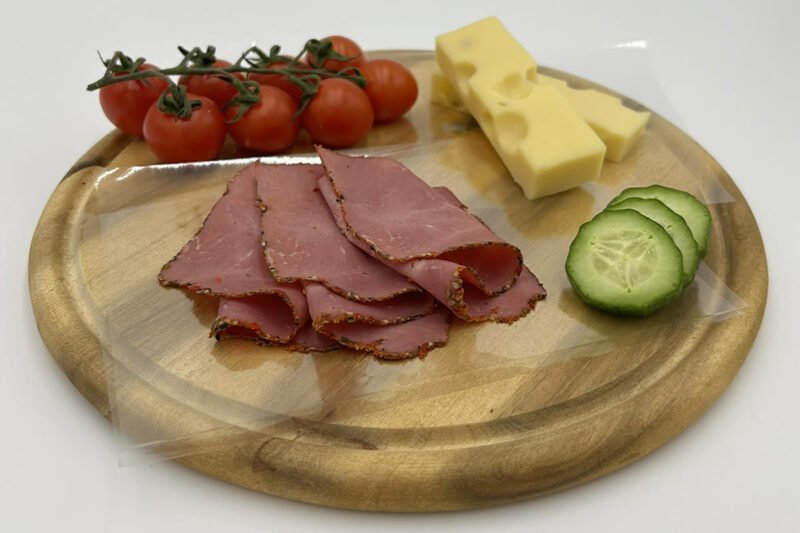
Why does cellophane keep food fresh for longer?
Cellophane is breathable and prevents fresh products in particular, such as fruit, vegetables and bread, from drying out too quickly. The paper film provides a certain barrier against external influences such as dust, dirt and insects and blocks some of the UV light, which is particularly useful for light-sensitive products such as spices and dried fruit. Cellophane is odorless and does not affect the taste or aroma of the packaged food.
Does cellophane have any other names?
Cellophane has many names, for example cellophane, glass skin, glass paper, Natureflex or paper foil.
Is cellophane plastic or paper?
Cellophane is made from wood. Therefore, it cannot be compared to plastic, which is made from petroleum. Although it is also an artificial material, it is made from renewable raw materials. As it is made from cellulose, i.e. it is actually a paper film, cellophane is classified as a paper product.
How sustainable is cellophane really?
Our natural film consists of almost 100 percent wood, a renewable raw material. It is also both biodegradable and compostable. By comparison, it usually takes several hundred years for conventional plastics to degrade.
However, it is not perfect: the production of cellophane requires a lot of water and energy, and chemicals such as sulphuric acid, carbon disulphide and caustic soda have to be used.
What are the special properties of cellophane?
The transparent film is impermeable to water, but allows water vapor to pass through. This prevents the packaged goods from drying out and provides excellent protection against oxidation. Cellophane is tasteless and odorless and preserves the aromas of the goods well.
How can I tell the difference between cellophane and plastic film?
Cellophane is transparent and has similar properties to plastic film, but is less plastic and elastically deformable. The look and feel of cellophane and a burning test can be used to check whether it is sustainable cellophane paper film or plastic film.
Is cellophane a new invention?
No. As early as 1908, the Swiss Jacques E. Brandenberger developed the paper film and brought it onto the market under the name Cellophan™. It was the only packaging film in existence until after the Second World War, so the name Cellophane quickly became established for transparent films of all kinds.
Can cellophane be reused?
Cellophane is actually a disposable product, but it can be reused as long as it is in good condition and not contaminated. Cellophane that is to be reused for food must not have previously come into contact with plants, food, bacteria or the like.
